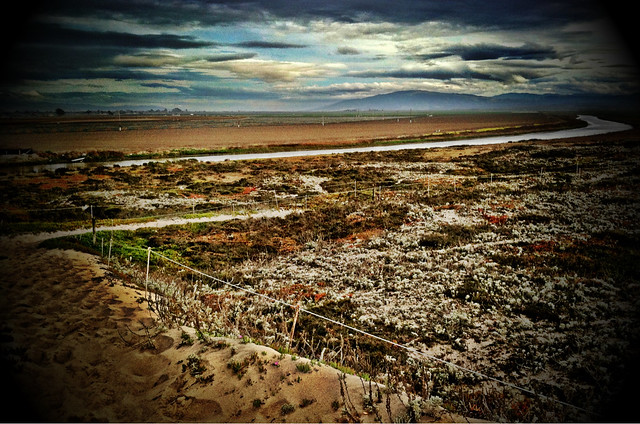When the State of California announced with great fanfare back in May that it was going to develop regulations for fracking, many of us assumed that meant some sort of system by which the oil and gas companies would be held accountable to state agencies and the public.
 Photo by Dave NixenSalinas Valley, California. Last week the federal government auctioned off mineral rights for
Photo by Dave NixenSalinas Valley, California. Last week the federal government auctioned off mineral rights for
17,000 acres of public land in central California to oil and gas companies.
Unfortunately, that was wishful thinking; the state’s draft fracking regulations take the public health of Californians and put it in the hands of Chevron, Occidental and other oil and gas companies.
That’s because the state’s draft regulations (pdf) — released this week by the Division of Oil, Gas and Geothermal Resources (DOGGR), — do not hold oil and gas companies accountable.
Instead California’s draft regulations are about agency notification and data collection. For example, if fracking is going to be done in a particular area, the company will need to notify DOGGR only 10 days prior and again 24 hours prior to the start of the operation. The data the company submits prior to fracking is public record but not publicly posted. Neither the state nor the company will notify the public that their land (or schoolyard or vineyard or backyard) is about to be fracked.
As the process continues, DOGGR gets more data and info, but the draft regulations do not provide the agency with the authority to say “no” to fracking. The plan is clearly assuming that California is a “drill baby drill” “frack baby frack” state.
Public notification about fracking operations, and the chemicals they’re injecting through the water table, is only required 60 days after cessation of fracking. At that point, the operator is required to post information unless it claims that its chemicals mix is a trade secret.
Furthermore, this info does not get posted on a state website, but on industry co-sponsored FracFocus. This creates an unwieldy two-tier system, forcing Californians to look in two places for oil and gas information affecting their communities — the current California state oil and gas website which maps every oil and gas well in California, and FracFocus.
So under the draft regulations, the only way a landowner would know if the well on their property was fracked would be to wait two months, then check the state website against the FracFocus website.
If you’ve been drinking water from a well your whole life, or irrigating your vineyard from a groundwater well, these regulations will not protect you if your well or your land is polluted from a fracking operation nearby. If you a drilling operation near your home goes bad, then who is liable for a breach or a spill? Not the operator — their only requirement is to report the breach or spill to DOGGR, not to be held accountable for harming the public or California’s environment. Under these draft regulations, Californians suffering from fracking contamination are on their own.
DOGGR is responsible for protecting the public. Unless these draft regulations are improved, they will fail in their job. While it’s laudable for California to recognize the need to catch up to other states by regulating hydraulic fracturing, or fracking, it’s hard to find much to praise from this discussion draft of fracking regulations.
We don’t have a paywall because, as a nonprofit publication, our mission is to inform, educate and inspire action to protect our living world. Which is why we rely on readers like you for support. If you believe in the work we do, please consider making a tax-deductible year-end donation to our Green Journalism Fund.
Donate